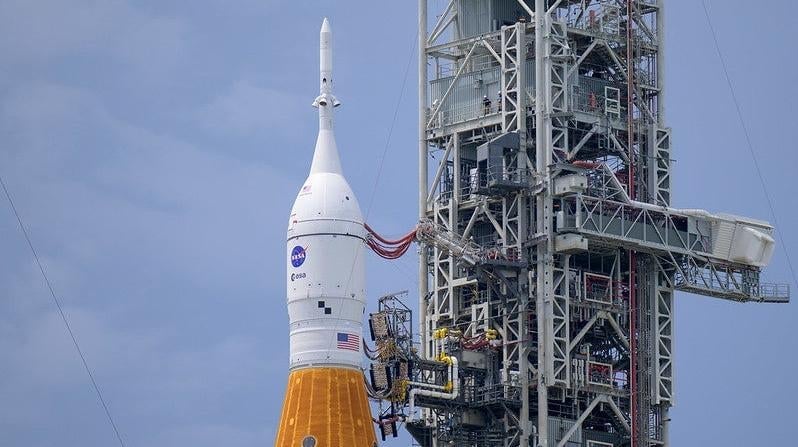Why is it so hard to fuel NASA's new moon rocket?
With fuel this cold, it's cryogenics all the way down.

NASA canceled the launch of a major test mission today because of difficulties fueling its new rocket, the Boeing-built Space Launch System.
Engineers spent the night carefully pumping hundreds of tons of liquid hydrogen and oxygen into several tanks on the 100 m (330 ft) tall rocket in an effort to be ready for flight at 8:30am US eastern time. They encountered leaks and false alarms, falling behind schedule and catching up before they encountered a problem they couldn’t fix before the window of time for lift-off had passed.
“We don’t launch until it’s right,” NASA administrator Bill Nelson said shortly after the decision to scrub the launch was made. “You don’t want to light the candle until it’s ready to go.”
Artemis 1 uses extremely cold fuel
The challenge in fueling the SLS is that its primary propellants, hydrogen and oxygen, are chilled to -423°F (-253°C) and -294°F (-145°C) respectively. That allows engineers to cram more fuel into the rocket for efficient propulsion, but it also requires complex plumbing on the ground and in the vehicle.
Consider that the tank that holds the rocket’s hydrogen propellant is 130 ft long—and shrinks 6 inches when it is full of the super-chilled fuel.
NASA had conducted four separate “wet dress rehearsals” earlier this year in an effort to practice fully fueling the rocket and simulate a full countdown. Each of those tests ran into problems, and none of them completed all of their objectives. Still, the space agency said it was confident enough in the results to invite some 25,000 guests and hundreds of journalists to today’s launch.
The final problem that brought ended the launch attempt was in one of the four main engines in the SLS. Before flight, engineers run super-chilled hydrogen through each engine to condition them to the correct temperature. One engine stubbornly refused to reach the right temperature despite several attempts to solve the problem, and the NASA flight controllers ran out of time.
When will the Artemis 1 launch be rescheduled?
Testing brand new spacecraft is often a start-and-stop business, resolving one issue only to find another. US astronaut Stan Love, who has worked on NASA’s deep space exploration work for more than two decades, said he wasn’t surprised by growing pains with a brand new vehicle with millions of parts. He recalled his own flight on a 2008 Space Shuttle launch being delayed by two months due to a redesign, and that vehicle had been flown to space more than one hundred times.
NASA leadership remains confident that these issues can be resolved and Artemis 1 will still make its shakedown cruise around the Moon. But it is notable that NASA was not able to practice the engine chill procedure during the last wet dress rehearsal, due to a hydrogen leak that was also encountered and resolved during the overnight countdown.
Now, engineers are assessing what happened and how they’ll fix it. Their next shot to launch the rocket is on Sept. 2, but if the vehicle has to be rolled back to its hangar in order to access the main engine, the next attempt to debut NASA’s new Moon rocket may have to wait even longer.